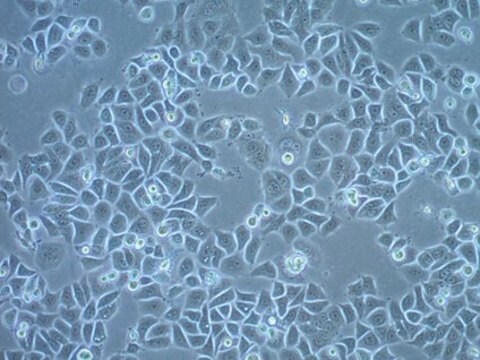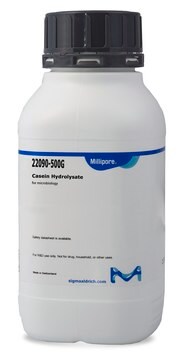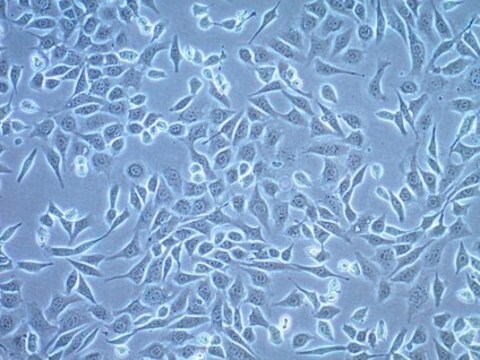Opis ogólny
SCC627, wykazująca ekspresję lucyferazy pochodna SCC626, zachowuje zdolność do inwazyjnego wzrostu, a także ekspresję wielu genów charakterystycznych dla OPSCC. Należą do nich cytokeratyna, E-kadheryna, BRCA2, p16 i EGFR. SCC627 został z powodzeniem wykorzystany do optycznego śledzenia przerzutów przez przestrzeń limfatyczną do płuc, co jest anatomicznie istotne dla ludzkich nowotworów jamy ustnej i gardła. Wraz z SCC625 i SCC626, ta seria linii komórkowych stanowi odpowiednią platformę do badań mechanistycznych OPSCC i testowania strategii interwencji terapeutycznych.
Zastosowanie
Komórki mEERL zostały zweryfikowane jako pochodzące od myszy i są ujemne pod względem zanieczyszczenia międzygatunkowego od ludzi, szczurów, chomików chińskich, chomików syryjskich złocistych i naczelnych, zgodnie z oceną w panelu Contamination Clear firmy Charles River Animal Diagnostic Services. Komórki uzyskały ujemny wynik w kierunku chorób zakaźnych w panelu Mouse Essential CLEAR firmy Charles River Animal Diagnostic Services. Komórki uzyskały ujemny wynik w kierunku mykoplazmy.
Cechy i korzyści
Linia komórkowa SCC627 mEERL Mouse E6/E7/hRas Oropharynx Epithelial Luciferase Cell Line wykazuje ekspresję lucyferazy i jest przydatna w badaniu raka płaskonabłonkowego głowy i szyi w immunokompetentnym, syngenicznym modelu.
Opis wartości docelowych
Nowotwory głowy i szyi stanowią szóstą najczęściej występującą klasę nowotworów. Wśród nich rośnie liczba przypadków raka płaskonabłonkowego jamy ustnej i gardła (OPSCC), a większość z nich jest wywoływana przez wirusa brodawczaka ludzkiego (HPV). Chociaż istnieją skuteczne metody leczenia, miejscowe nawroty i przerzuty do węzłów nadal powodują śmiertelność w niektórych przypadkach. Historycznie, wgląd w transformację wywołaną przez HPV uzyskano w kontekście modeli raka szyjki macicy i brodawek anogenitalnych. Chociaż wiele z nich ma znaczenie dla OPSCC, korzystne będzie posiadanie systemów, w których skutki zakażenia HPV można badać w kontekście specyficznym dla OPSCC. Szczep rodzicielski dla SCC627, mysiej linii komórkowej E6/E7/hRas/lucyferaza (mEERL), został utworzony przez retrowirusową transdukcję genu HPV E6, genu HPV E7 i ludzkiego genu hRas G12V do pierwotnych mysich komórek nabłonka jamy ustnej i gardła. Ze względu na synergistyczne działanie trzech onkogenów wykazano, że uzyskana linia komórkowa (dostępna również jako SCC626, linia komórkowa mEER) jest zdolna do hodowli, wzrostu niezależnego od zakotwiczenia in vitro oraz tworzenia słabo zróżnicowanych, agresywnie przerzutowych guzów po ortotopowym wstrzyknięciu do myszy immunokompetentnych.ŹRÓDŁACC627 jest pochodną linii komórkowej mEER (SCC626) z ekspresją lucyferazy. SCC626 została utworzona przez retrowirusową transdukcję genu HPV16 E6, genu HPV16 E7 i ludzkiego genu hRas do pierwotnych komórek nabłonka jamy ustnej i gardła wyizolowanych od samca myszy C57BL/6. jamy ustnej i gardła. REFERENCES1. Kademani D. 2007. Rak jamy ustnej. Mayo Clin Proc. 82(7): 878-87. 2. Rogers SN, Brown JS, Woolgar JA, Lowe D, Magennis P, Shaw RJ, Sutton D, Errington D, Vaughan D. 2009. Przeżycie po pierwotnej operacji raka jamy ustnej. Oral Oncol. 45(3):201-11. 3) Pytynia KB, Dahlstrom KR, Sturgis EM. 2014. Epidemiology of HPV-associated oropharyngeal cancer. Oral Oncol. 50(5): 380-6. 4) Hoover AC, Spanos WC, Harris GF, Anderson ME, Klingelhutz AJ, Lee JH. 2007. The role of human papillomavirus 16 E6 in anchorage-independent and invasive growth of mouse tonsil epithelium. Arch Otolaryngol Head Neck Surg. 133(5): 495-502. 5) Williams R, Lee DW, Elzey BD, Anderson ME, Hostager BS, Lee JH. 2009. Preclinical models of HPV+ and HPV- HNSCC in mice: an immune clearance of HPV+ HNSCC. Head Neck. 31(7): 911-8. 6. Vermeer DW, Coppock JD, Zeng E, Lee KM, Spanos WC, Onken MD, Uppaluri R, Lee JH, Vermeer PD. 2016. Przerzutowy model HPV+ raka płaskonabłonkowego jamy ustnej i gardła wykazuje heterogenność przerzutów nowotworowych. Oncotarget. 7(17): 24194-207.
Przechowywanie i stabilność
Komórki mEERL powinny być przechowywane w ciekłym azocie do momentu użycia. Komórki mogą być hodowane przez co najmniej 10 pasaży po wstępnym rozmrożeniu bez znaczącego wpływu na ekspresję markerów komórkowych i ich funkcjonalność.
Inne uwagi
Niniejszy produkt jest przeznaczony do sprzedaży i sprzedawany wyłącznie instytucjom akademickim do wewnętrznego użytku akademickiego zgodnie z warunkami "Umowy o użytkowaniu akademickim", jak wyszczególniono w dokumentacji produktu. Aby uzyskać informacje na temat innych zastosowań, prosimy o kontakt pod adresem licensing@milliporesigma.com.
Oświadczenie o zrzeczeniu się odpowiedzialności
O ile nie określono inaczej w naszym katalogu lub innej dokumentacji firmy dołączonej do produktu(-ów), nasze produkty są przeznaczone wyłącznie do użytku badawczego i nie mogą być wykorzystywane do żadnych innych celów, w tym między innymi do nieautoryzowanych zastosowań komercyjnych, zastosowań diagnostycznych in vitro, zastosowań terapeutycznych ex vivo lub in vivo lub jakiegokolwiek rodzaju konsumpcji lub zastosowania u ludzi lub zwierząt.
Ta strona może zawierać tekst przetłumaczony maszynowo.






